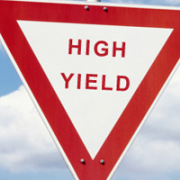No market correction … just yet
| Summary: Economic growth is weak, the market and dollar are down, and the Reserve Bank is likely to continue cutting rates. |
| Key take-out: At some point in time, yield hunters will re-enter the market to buy the banks, Telstra and others paying good fully franked returns. |
| Key beneficiaries: General investors. Category: Economy. |
Our market hasn’t technically corrected – but we are nearly at the 10% mark. What you want to see as an investor is some stabilisation and consolidation at these levels.
Technical picture: Still in free-fall.
Fundamental picture: The overall market is trading at around its average PE ratio.
Many underestimated the amount of cash sitting on the sidelines wanting yield that caused the market to rally from 4,350 in November last year, and now it seems we are underestimating the amount of foreign capital wanting to exit the Australian equity market and sinking $A. The downturn also has a bit to do with the state of the Australian economy. The Reserve Bank has cut interest rates to record lows for a reason. Looks like the $A has broken its second support level.
Poor GDP figure
It was a poor GDP figure on Wednesday. The headline figure showed growth of 2.5% over the year, the weakest growth in nearly 2 years. If not for the 1% lift from rising exports and falling imports, our economy could have actually gone backwards. Western Australia went backwards significantly. In other words, it’s not a recession but many parts of the economy were recession like (and important parts at that). Something tells me if the RBA had its time back, it would have cut.
Who will win? Yield vs falling $A
The general consensus is that RBA will continue to cut rates. Now if my economics lecturer was worth his salt, the $A should continue falling (unless this has already been priced into it). The macroeconomic theory is that investors (domestic or international) will park their capital where they can get the highest interest rate. On absolute levels, the Australian cash rate is at record lows.
On a relative basis, however, it is much higher than in the US and Europe. It’s a demand and supply thing. Demand for the $A pushes the $A higher and away we go. Although, with the RBA cutting rates and the Australian economy looking dismal, the $A has tanked it, leaving international fund managers holding a depreciating asset (the shares) in a depreciating currency ($A). This has caused the market to correct.
Yet at some point, domestic investors (who aren’t exposed to a falling $A) will surely take advantage of the yield available (unless they feel that yield will disappear because of falling profits – a topic for another day). But I took a look at the yields on the banks and Telstra fully franked, and they beat the pants out of term deposit offerings. Yes, term deposits come with no anxiety, but after inflation (around 2.5%) and tax, many are looking at a negative real return. But at some point in time, yield hunters will re-enter the market and buy the banks, Telstra and other blue-chips for nearly 20% less than what they were trading at a month ago.
‘Sam Fimis is a private client adviser with Patersons Securities and author of Premiership Portfolio: 6 Step Guide to Succeeding in the stockmarket. For more information visit www.premiershipportfolio.com’.




















